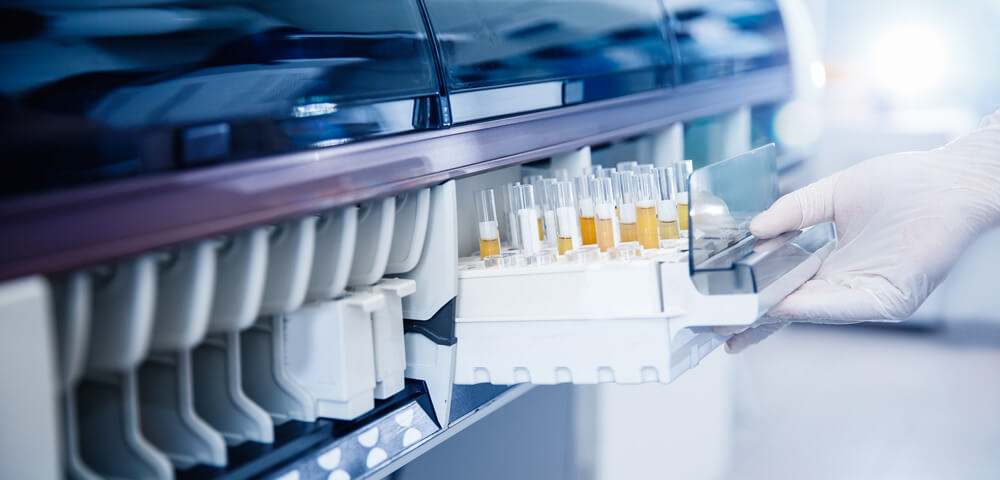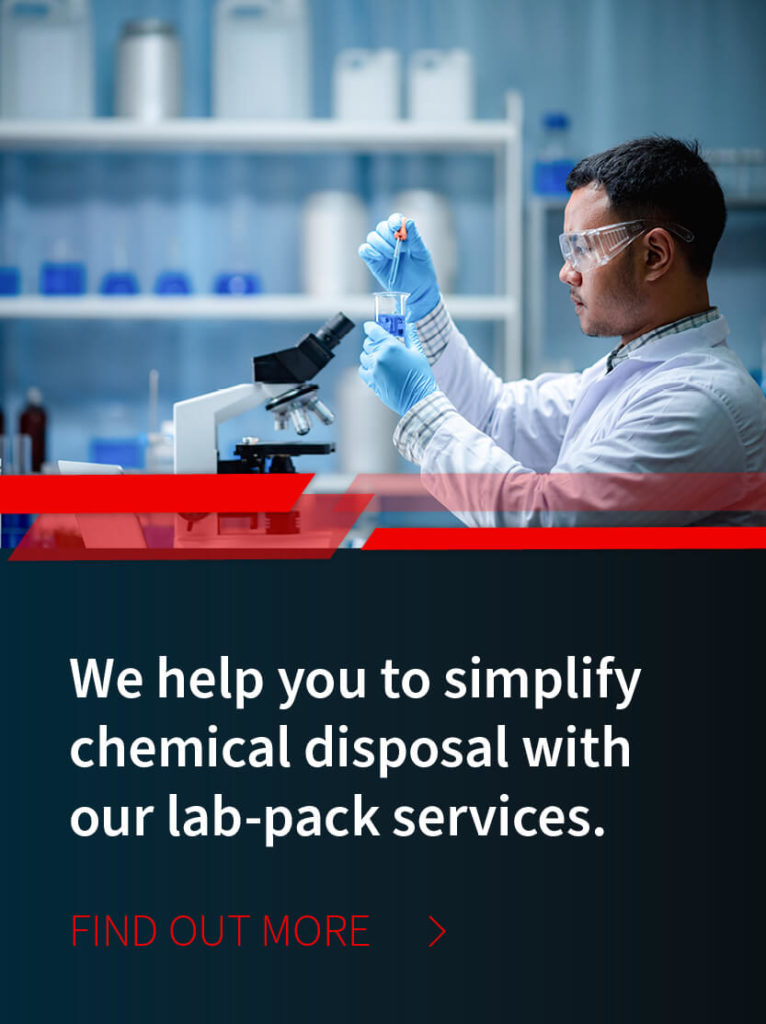
/ IN THIS BLOG
01 / Categories of liquid lab wastes
Liquid wastes are the unavoidable byproduct of many laboratory processes, whether from clinical medical tests & procedures or laboratory research & experimentation. Thus, liquid lab waste disposal is of particular interest to the EPA, as well as to many statewide agencies, many of which have stricter regulations than their federal counterparts.
For the purposes of this discussion, liquid lab waste is separated into two categories:
02 / Listed and Characteristic liquid lab wastes
Listed wastes. The EPA maintains two lists of substances that it considers hazardous waste, called the “P” and “U” lists. (Hence, “listed wastes.”) The main difference between the two is their level of risk. Stated succinctly, U-listed wastes are “toxic,” meaning they can damage an organism to one degree or another; and P-listed ones are even more dangerous.
Characteristic wastes. Wastes that don’t appear on the U or P lists might nonetheless be deemed hazardous waste for their “characteristics.” (Hence, “characteristic wastes.”) There are four characteristics, three of which are fairly self-explanatory: ignitability, corrosivity, and toxicity.
The fourth—reactivity—is a bit more complicated. It’s the tendency of one substance to become ignitable, corrosive, or toxic in the presence of another, meaning that if you dispose of both into a common container, they become a hazardous waste, even though each is benign alone.
E.g. mixing an acid so mild that we sprinkle it on a salad—vinegar—with something as relatively benign as household bleach—Clorox®—will generate highly toxic chlorine gas.
Also consider: mixing different chemical wastes that are already hazardous by themselves can form a compound that’s even more corrosive, ignitable, reactive, and/or toxic than any one of its constituents, and so even more dangerous.
E.g., plain water in the presence of sodium hydride or alkali metals (such as sodium or potassium), will generate flammable hydrogen gas. Or mixing it with sodium phosphide will yield highly toxic phosphine gas.
So, as in all things involving hazardous waste disposal, it’s crucial to get expert advice.
03 / You need a plan for separating laboratory chemical wastes
Given that certain laboratory chemical wastes are reactive when combined, it’s crucial that you keep them separated.
Thereby, you cannot allow individual employees to be making ad hoc decisions about what to do with a random chemical lab waste when it presents itself. You need a system: the prosaic place for everything and everything in its place.
Once you’ve developed such a system—and ensure everyone’s trained about it—it’s much less likely that dangerous or potentially litigious mistakes will be made.
Also, when liquid wastes are properly separated and safely stored, your workplace operations will be inherently safer—and less likely to run afoul of OSHA rules.
04 / Guidelines for handling laboratory chemical wastes
Keep all chemical wastes separated. Don’t have untrained staff making ad hoc decisions about which might be compatible with the other.
Post chemical abbreviation sheets in conspicuous places so that employees are certain about what’s inside various storage containers.
Designate & label storage areas where food, flammables, and other specific substances should not be introduced.
Label storage containers with important information, such as when received, opened, tested, etc.
Keep an inventory of in-house chemical wastes awaiting hazardous waste disposal.
05 / Biological and “RMW” laboratory liquid wastes
Different from being Listed or Characteristic, a laboratory liquid waste can be “hazardous” for being a “biological waste” or “regulated medical waste” (RMW). These are liquid wastes that are infectious, radioactive, or otherwise dangerous, including but not limited to:
Anything that’s been soaked in blood (gloves, gauze, gowns, etc.)
Cultures of infectious diseases and/or agents
Human or animal urine
Regulated medical waste (RMW) presents a number of compliance challenges because most rules governing it are defined at the state level. Adding to the complexity, rules for medical waste disposal often emanate from multiple state agencies.
Nearly all states have enacted medical waste regulations, but standards vary widely. Some state medical waste disposal rules are fashioned after the Medical Waste Tracking Act, while others bear little resemblance.
“In most states, the environmental protection agency is primarily responsible for developing and enforcing regulations for medical waste management and disposal. Although in some states, the department of health may play an important role (e.g., MO, OK) or even serve as the primary regulatory agency (e.g., CO). Where both agencies are involved, typically the department of health is responsible for onsite management and the environmental agency is responsible for transportation and disposal (e.g., LA, MO).”
06 / Biological and “RMW” laboratory liquid wastes
Once your wastes are properly identified, categorized, and separated, you must ensure that they’re transported to the correct category of waste disposal facility. E.g., there are chemical wastes vs. biological wastes vs. corrosive wastes vs. reactive wastes, etc.
Different companies are “permitted” to transport each. Different facilities are “permitted” to receive them for treatment and/or disposal. And the onus is entirely upon you to choose among them correctly.
Also bear in mind that because of your EPA “cradle-to-grave” responsibilities for any hazardous waste you generate, the legal consequences for engaging a legally-unqualified supplier is entirely upon you.
Don’t take chances. Call one of our experienced laboratory waste managers today or request a quote below.
And thank you for reading our blog!
Robert Losurdo
President, COO








